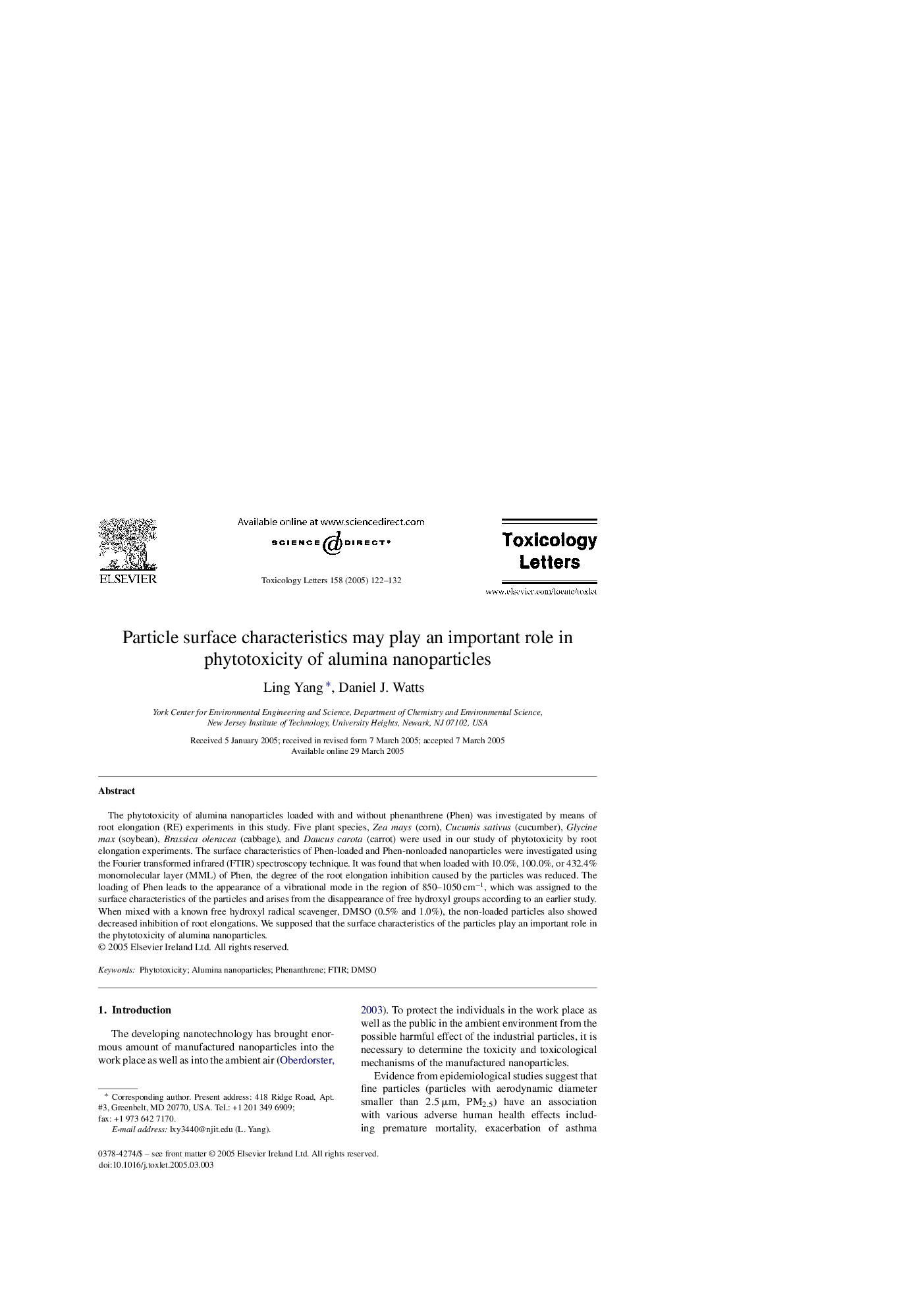| Article ID | Journal | Published Year | Pages | File Type |
|---|---|---|---|---|
| 9037122 | Toxicology Letters | 2005 | 11 Pages |
Abstract
The phytotoxicity of alumina nanoparticles loaded with and without phenanthrene (Phen) was investigated by means of root elongation (RE) experiments in this study. Five plant species, Zea mays (corn), Cucumis sativus (cucumber), Glycine max (soybean), Brassica oleracea (cabbage), and Daucus carota (carrot) were used in our study of phytotoxicity by root elongation experiments. The surface characteristics of Phen-loaded and Phen-nonloaded nanoparticles were investigated using the Fourier transformed infrared (FTIR) spectroscopy technique. It was found that when loaded with 10.0%, 100.0%, or 432.4% monomolecular layer (MML) of Phen, the degree of the root elongation inhibition caused by the particles was reduced. The loading of Phen leads to the appearance of a vibrational mode in the region of 850-1050Â cmâ1, which was assigned to the surface characteristics of the particles and arises from the disappearance of free hydroxyl groups according to an earlier study. When mixed with a known free hydroxyl radical scavenger, DMSO (0.5% and 1.0%), the non-loaded particles also showed decreased inhibition of root elongations. We supposed that the surface characteristics of the particles play an important role in the phytotoxicity of alumina nanoparticles.
Related Topics
Life Sciences
Environmental Science
Health, Toxicology and Mutagenesis
Authors
Ling Yang, Daniel J. Watts,
